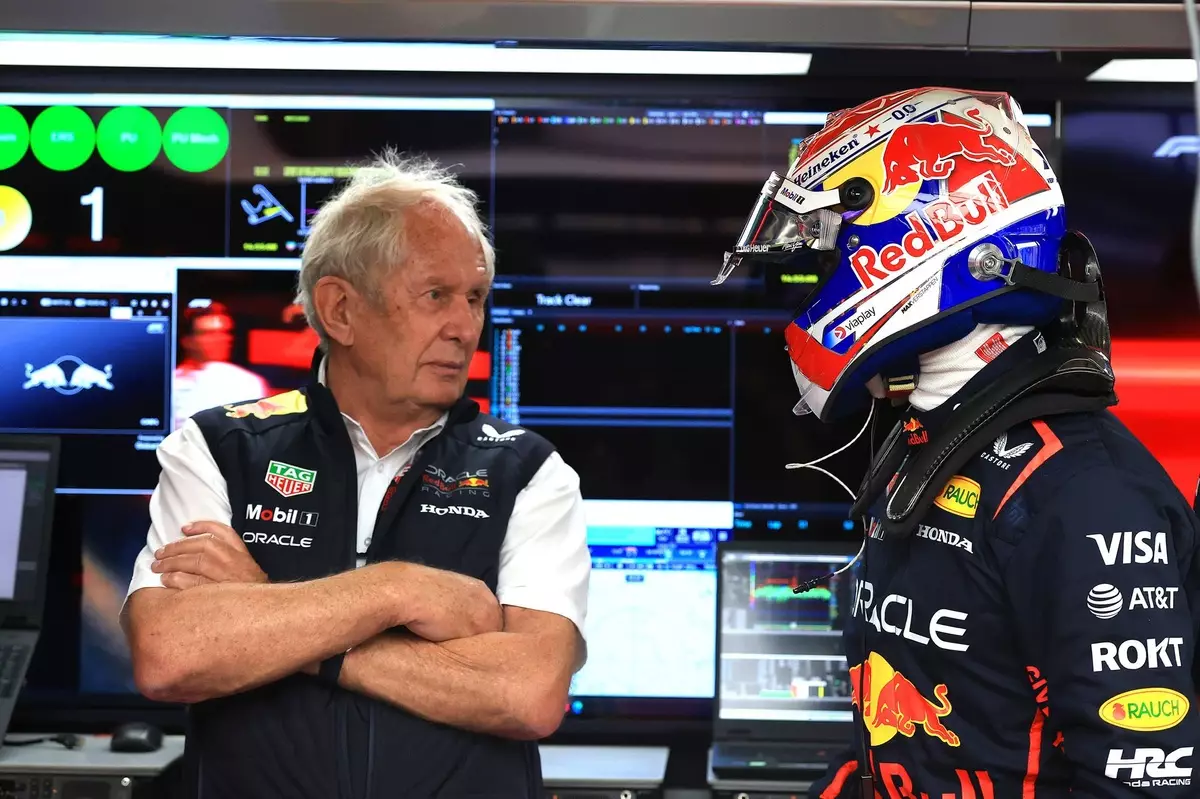The recent Spanish Grand Prix showcased one of the most intense moments in Max Verstappen’s racing career, a situation that not only left fans bewildered but also raised eyebrows within the Red Bull Racing team. Red Bull’s advisor, Helmut Marko, expressed his confusion over Verstappen’s decision-making process during the chaotic final laps of the race. This incident is not merely about a single race; it encapsulates the pressures and psychological strategies at play in Formula 1, especially for a driver with such a lofty reputation.
Verstappen’s dramatic loss of third place to Charles Leclerc during a safety car restart triggered a cascade of events that would ultimately culminate in an unsportsmanlike collision with George Russell. Marko famously described the aftermath as ‘all hell breaking loose,’ which accurately reflects the turmoil and complexity of the competitive atmosphere in F1. When Verstappen lost his position to Leclerc, it became apparent that the pressure mounted far beyond the physical demands of the race.
Analyzing the Pressure Cooker Environment
In motorsport, especially in Formula 1, the psychological burden can impact a driver’s judgment significantly. Verstappen’s behavior can be attributed to a convergence of frustration and the high stakes of racing. Following the safety car phase, he was in an adrenaline-fueled state, a cocktail of speed and pressure that likely clouded his decision-making abilities. Marko commented on this during interviews, highlighting how Verstappen, despite being well-versed in racing regulations, appeared to lose his grasp under pressure.
The inherent unpredictability of a restart situation only amplifies this stress. Not only is a driver racing against their competitors, but they must also navigate the intricacies of regulation and team strategy. When Leclerc’s sudden maneuver led to contact with Verstappen, it was a flashpoint that exacerbated an already tense situation. Verstappen’s subsequent decision to drive into Russell indicated a momentary loss of composure—an insight into how quickly a driver’s focus can shift from competitive prowess to a defensive reflex under duress.
The Regulatory Ramifications of Racing Emotions
The fallout from Verstappen’s actions was immediate and significant. He received a 10-second penalty and three penalty points—two indicators that his actions were not just detrimental to his performance but also raised questions about the integrity of driver conduct on the track. Marko maintained that while the decision to award a penalty was justified, it underscored a critical point in Verstappen’s career: the need for emotional regulation in high-stress situations.
Verstappen’s acknowledgment of wrongdoing through social media illustrates his awareness of the broader implications of his actions. However, admitting fault does not come easily to someone with his competitive spirit. Marko’s comments about Verstappen’s reluctance to accept blame reflect a deeper narrative prevalent in sports—where emotional investment can lead to missteps that mar reputations and complicate relationships with fellow competitors.
The Future for Verstappen: Navigating a Narrow Path
Driving is not merely about car control; it’s an intricate dance involving mental fortitude, emotional intelligence, and strategic thinking. Verstappen’s encounters with Russell over the past seasons signal an underlying rivalry that could fan the flames of future conflict if not adequately managed. The pressure of maintaining his title as a reigning World Champion, combined with external expectations, places an immense burden on his shoulders. As a result, the forthcoming races will demand a balanced approach, one that tempers fierce competitiveness with a level-headed strategy.
In Formula 1, as in life, each action has consequences, and the ripple effect of Verstappen’s recent decisions may serve as a vital turning point. For the reigning champion, success lies not only in raw speed and skill but also in his ability to navigate the complex psychological landscapes of competitive racing. As he moves forward, striving to merge tactical brilliance with emotional control will ultimately define his legacy in the sport. In the high-octane world of Formula 1, a driver’s capacity to maintain composure in the face of adversity is often the difference between brilliance and chaos.

